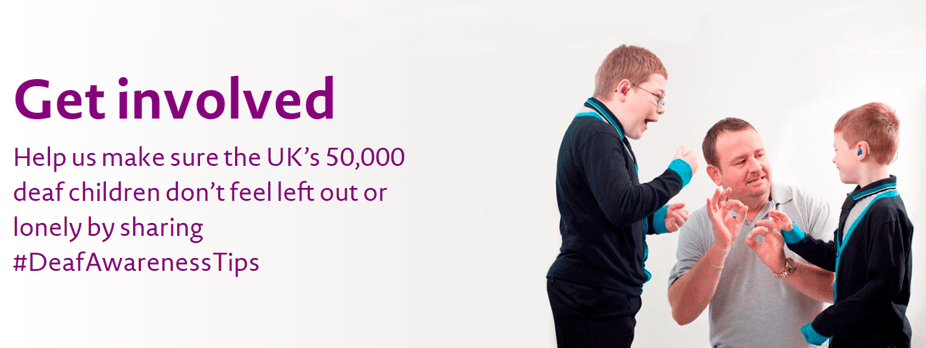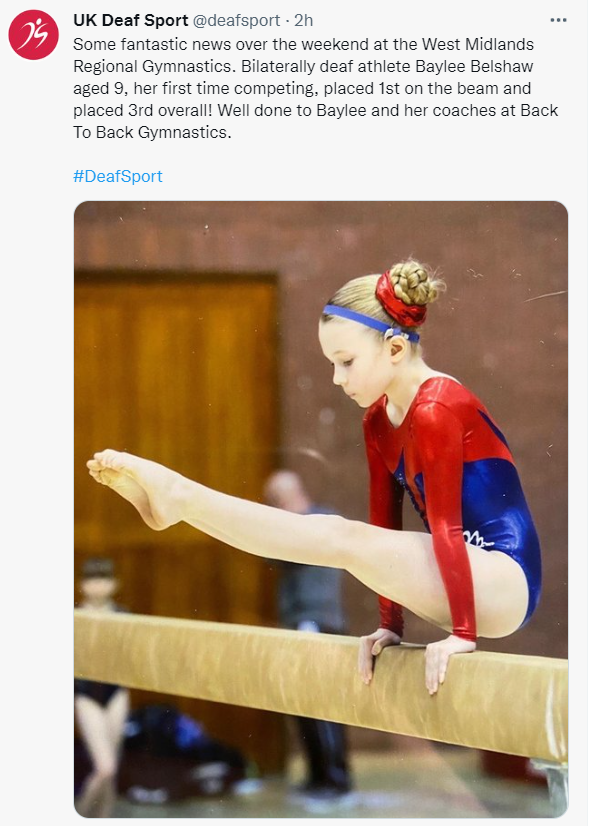Deaf Awareness week is an annual event. The focus of the week is to raise awareness of deafness and hearing loss; celebrating exceptional individuals, and showcasing what you can do to champion inclusivity and be more deaf-friendly.

Every deaf child or young person is different. Levels of hearing loss, communication methods and use of hearing technology can vary widely. It’s important to remember this and find out what everyone’s individual needs are so you can make sure everyone is included in whatever you are doing together.
Whether you’re a parent, relative or you work with deaf children and young people, there’s lots of simple things you can do to be more deaf-friendly – and the National Deaf Children's Society has got tips and resources to help you.
There are lots of ways to chat … probably more than you think, watch the video below to see how!
Did you know (according to Royal National Institute for Deaf People [rnid] website):
In the UK, 1 in 5 adults are deaf or have hearing loss, and 1 in 8 have tinnitus.
Despite that, many people face the stigma of being treated as stupid, shouted at, or made fun of. There’s a frustrating lack of patience, empathy and understanding. Barriers to work, travel, socialising and communication take a toll on self-esteem and mental wellbeing, and cause social isolation. Day-to-day life is more difficult – and this needs to stop.
LGfL Resources
Widgit offers LGfL schools access to over 15,000 symbols (text or category search filters can be used to download and use individual symbols) and also Widgit Symbol Resource Packs (over 1000 differentiated cross-curricular resources).
Immersive Learning with Sandbox AR is a great way to integrate immersive technology into everyday teaching and indeed allow deaf children to get creative with building their own SandboxAR platforms and spaces.
Once you understand what immersion can do - stimulating that emotional response - you can start to understand where you can use immersive technology and immersive content in your teaching as well. Watch the video below:
-- Features of SandboxAR --
• Create, build and explore in augmented reality.
• Explore creations in life-size scale!
• Share your sandboxes with other users with a simple QR code.
• Capture snapshots and videos of your Sandbox.
Download the Sandbox AR app for iPad here.
Other Resources
British Sign Language is the most common form of sign language in the UK and has been recognised as a language in its own right since 2003. Find out how you can learn to sign. BSL involves a combination of hand shapes and movements, lip patterns, facial expressions and shoulder movements. It has its own grammar and is structured in a completely different way from English.
BSL Fingerspelling
Fingerspelling is the BSL alphabet. Certain words – usually names of people and places – are spelt out on fingers. Fingerspelling alone isn’t sign language, but it can help you to communicate with someone who is Deaf.
You can quickly learn the fingerspelling alphabet with the RNID's free fingerspelling card. Download your free fingerspelling card
The Sense Charity put together five signs they think everyone should know (as part of the Sign Language Week in March 2022) #BSLBringsUsTogether.
BSL Signing dictionary - each word has video clips to show you how to sign it.
The Singing Hands Youtube Channel gives Makaton signed singalongs.
Finally, share positive news stories with children about people in the deaf community. For example, I saw this tweet (screenshot below) from @deafsport account:

Remember we would love to see any photographs, posters or other work completed by your pupils. Please share with us via our Twitter or Facebook pages using the hashtag #DeafAwarenessWeek.